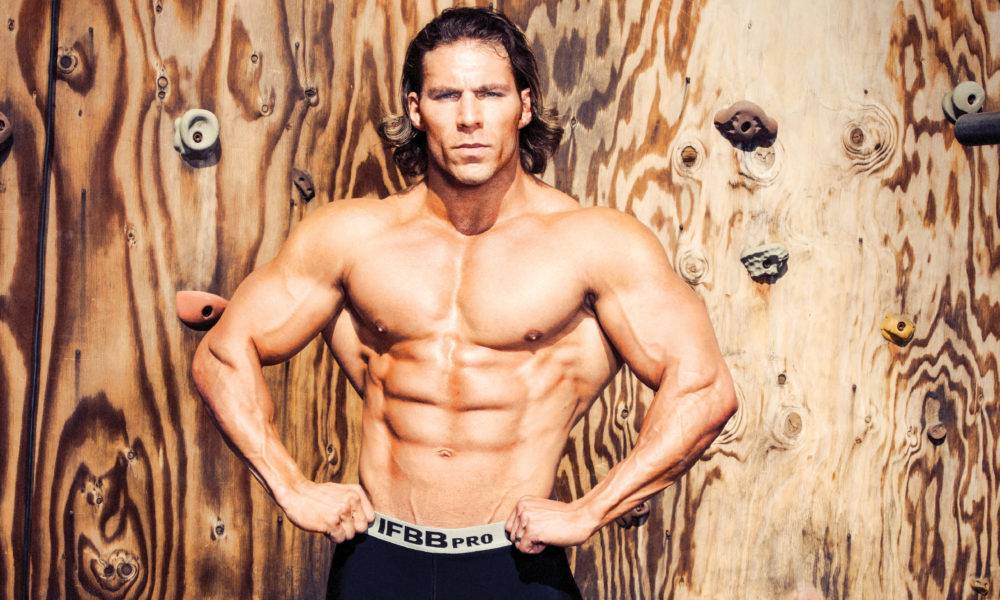

Is a certain spot on your physique lagging? We’ve got the solution
By Nick Nilsson
There’s a lot more to achieving a balanced, aesthetic physique than just the basics. Don’t get me wrong, you need the basic lifts to build a solid foundation of mass and strength. However, focusing solely on the basic movements can leave you with an unbalanced physique that may not look as “finished” as it could.
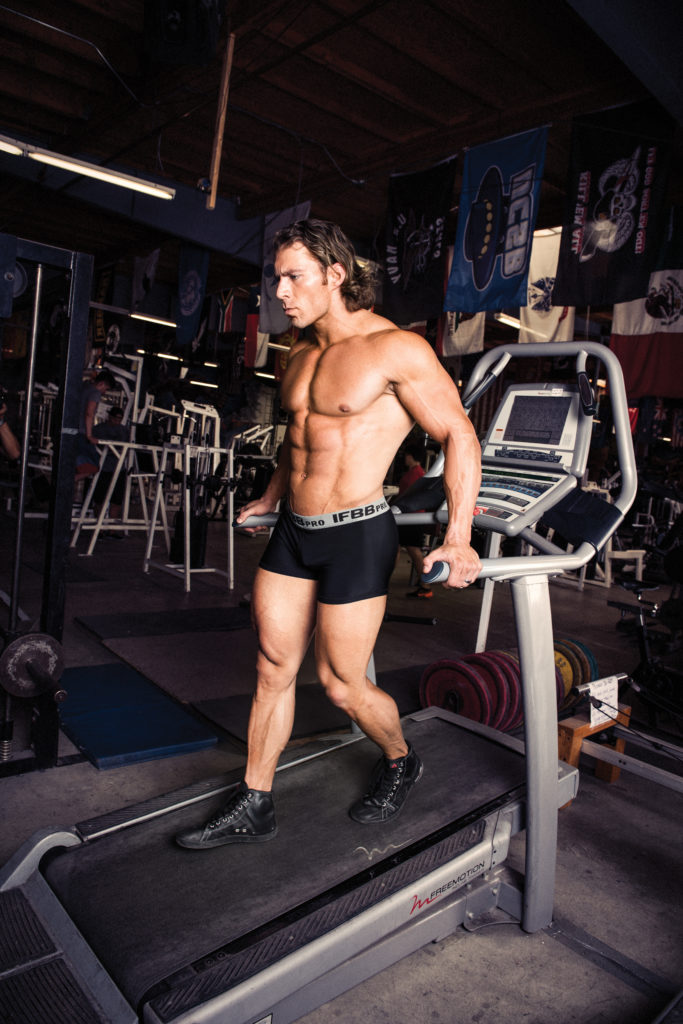
That’s where these half dozen exercises come in. They’re going to address six of the most common deficits you might find in the mirror. This call for unmerciful self-honestly about your muscle groups. If you’re training for the most aesthetically pleasing physique possible, you know you have weak points that need addressing. It’s what separates you from the average gym-goer. These six exercises will help you bring up those lagging body parts and polish your physique into something that turns heads and drops jaws.
Problem: Shallow Upper Pecs
Solution: Decline Bench-Clench Push-Ups
The upper chest is one of the toughest areas of the body to develop, and a weak upper chest makes the entire chest look small. Incline bench presses don’t always do the trick to build up this area.
This “fixer” exercise is a unique version of the feet-elevated push-up done with your hands set on either side of the end of a bench. The downward angle of your body shifts the load to the upper aspect of the pecs, and your positioning over the end of the bench allows you to keep that decline body position all the way down until your chest touches the bench.
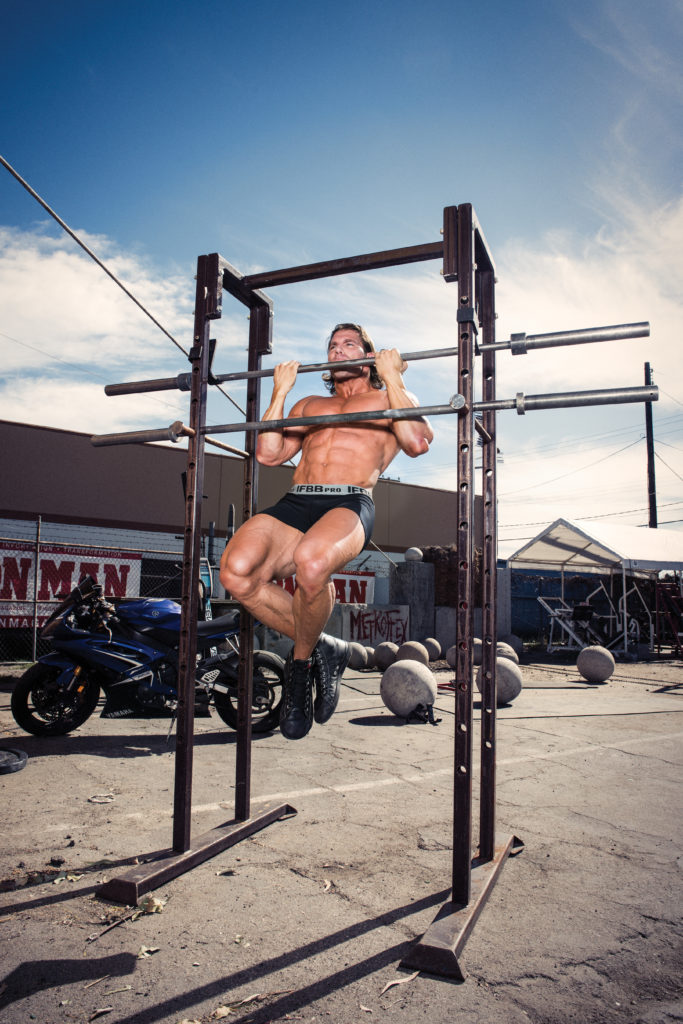
This is important because when feet-elevated push-ups are done on the floor, your face gets in the way of your ability to maintain that decline body position. You have to flatten your body, shifting tension off the upper chest and back onto the mid-chest. With this exercise, because your hands are set on the sides of the bench, instead of pushing up you’re going to push inward in order to move your body.
This inward-tension more closely follows the actual function of the pecs, apply massive, targeted resistance to the upper pec area, giving you a contraction directly in those upper-pec fibers similar to a cable crossover for the mid-chest.
Prescription: To perform this, you’ll need a flat bench and a power rack or Smith machine, or something else approximately five to six feet high that you can place your feet on. Set the bench a bit forward of the bar and perpendicular to it. You’ll likely need to adjust its position a bit when you first perform the exercise.
Hook your feet over the bar, then set your hands on the sides of the bench with just the “meat” of your thumbs on surface. This keeps your hands from sliding off and grip strength from being a limiting factor in the exercise.
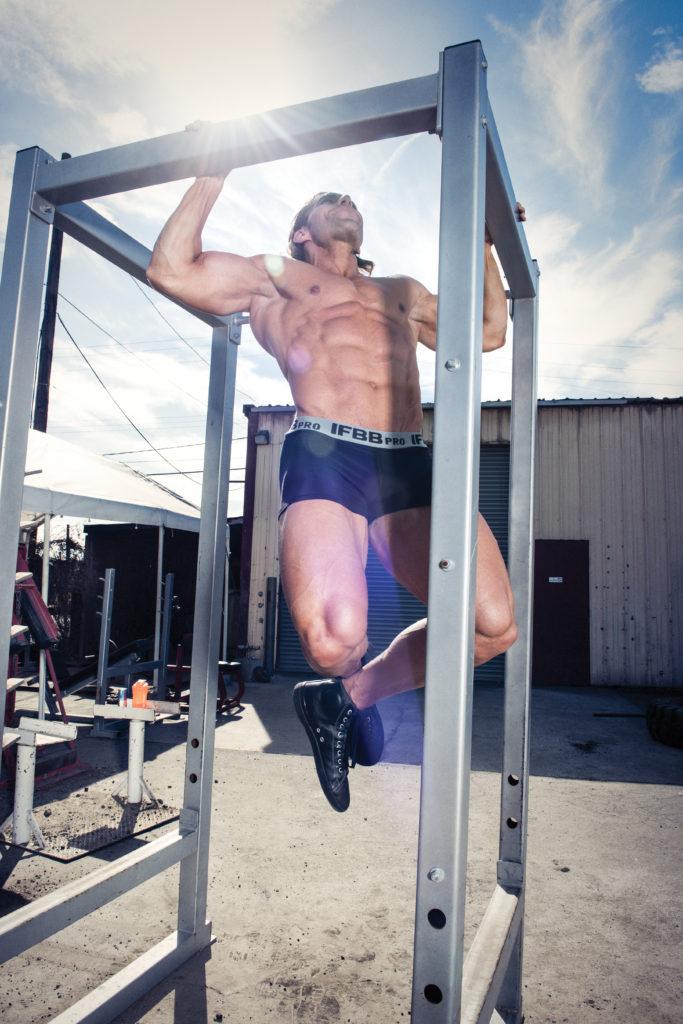
This exercise should be done for three to four sets of as many reps as you can get. Don’t be surprised if you can only get a few reps the first time you try this. When done properly, it’s extremely challenging even if you’re strong at regular push-ups.
Problem: Wimpy Lateral Delts
Solution: Towel-Plate Lateral Raises
If you want your physique to have maximum visual impact, you need wider shoulders. Every bit of mass you put on the side delts has more overall impact than just about any other single area of the body.
Shoulder training is often done with a heavy emphasis on pressing. If you need to build overall mass in your delts, there’s nothing wrong with heavy pressing. However, if you rely too much on presses for shoulder development, your body will tend to build more mass in the front delts, which are more dominant during pressing movements.
Using too much weight makes the problem worse, as the triceps and traps are recruited to just “move the weight” rather than activate the deltoids. That’s why isolation exercises like lateral raises are critically important for a balanced physique. If traditional lateral raises and presses aren’t cutting it, you need to try towel-plate lateral raises.
This exercise will put emphasis on the lateral delts from two directions: vertically and laterally, doubling the effectiveness of the exercise.
Prescription: String a towel through the center hole of a weight plate. (Use a 25-pound plate to start.) Grip the ends of the towel with the plate in the center of the towel. Now perform a lateral raise with the ends of the towel.
As you raise the towel ends up, you get vertical tension from lifting the plate up and direct lateral tension as you straighten the towel to horizontal and try to pull it taut. This dual tension is placed directly on the lateral delts, which will respond with fresh, new growth.
Perform this exercise for two to three sets of 10 to 12 reps. This is not a “power” exercise, so the reps should not be performed quickly. It should be done with a focus on developing tension in the lateral delts.
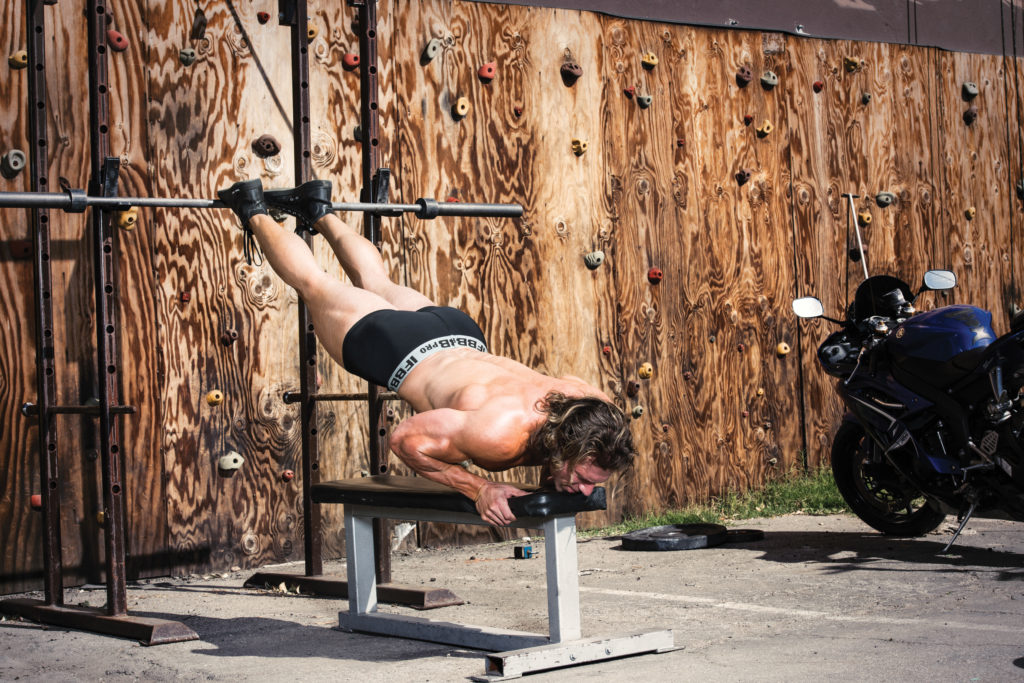
Problem: Thin Biceps
Solution: Forearm-Braced Chin-Ups
Do your biceps look thin rather than full and thick? If you focus on isolation exercises for biceps, this may be an issue for you.
This bicep-focused compound exercise, what I call Nilsson curls, puts tremendous loading on the biceps to help develop thickness in the muscle, giving it that powerful look you want (think of the thick biceps you see on world-class gymnasts). By bracing the forearm during the chin-up, you prevent forward movement of the elbow during the pull, locking the forearm into position. This switches the biceps from secondary movers to primary movers, turning the chin-up into an elbow flexion exercise rather than a shoulder adduction exercise. This is an incredibly powerful change in focus that will put massive loading on your biceps.
Prescription: To set this up, you’ll need a power rack and two bars. Place the J-hooks as high on the rack as you can, then set one of the bars on them. This will be your gripping bar.
Now set the safety rails or another pair of J-hooks about 18 inches lower and place the second bar on them, braced against the frame of the rack. Picture the two bars like the rungs of a ladder.
Grip the top bar and brace your forearms against the lower bar (you can use a bar pad, if you need some cushioning), then perform a chin-up. The moment you start to pull yourself up, the bar stops your forearm from moving and your biceps take the brunt of the load of your entire bodyweight.
This exercise can be done for three to four sets of as many reps as you can get on each set. It’s extremely challenging, and you’ll need to be strong enough to perform at least eight to 10 normal chin-ups before being able to do this exercise properly.
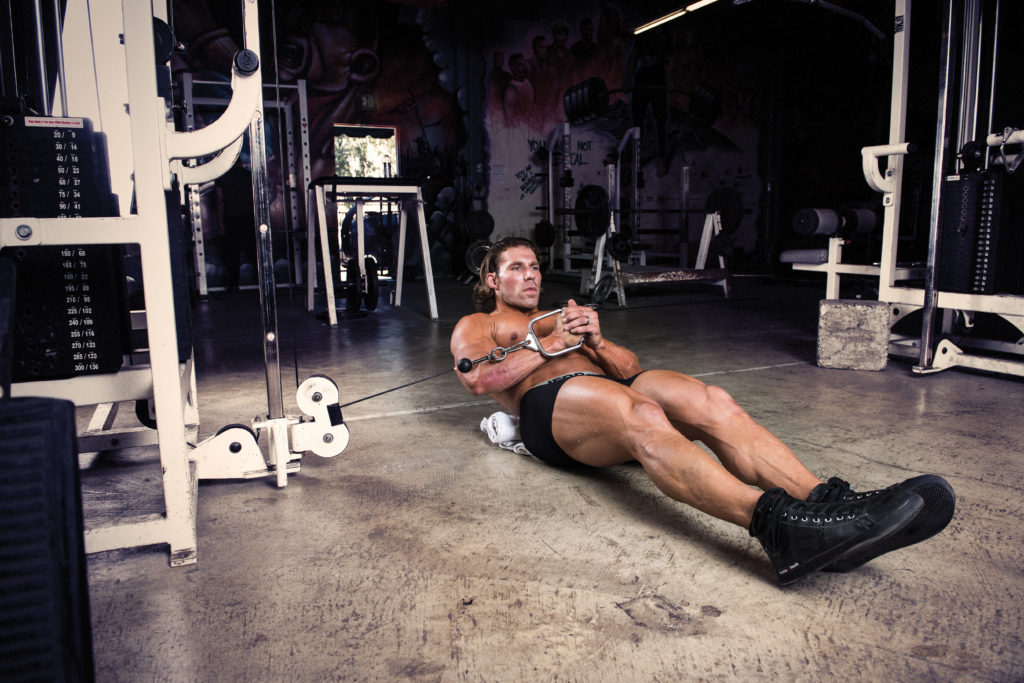
Problem: Stomach Bulge
Solution: Abdominal Sit-Up Pallof Press
A big, bulging gut is a look that nobody wants. And this is not just a problem for heavyweight bodybuilders. A protruding abdomen is often a side effect of our modern society where we sit for many hours a day and the abdominal muscles are in a relaxed state for long periods of time.
To keep your stomach tight, you need an exercise that targets the deep muscles of the core: the obliques and the transverse abdominis (TVA) to form an internal “corset.” And this does not mean doing twisting crunches, which can lead to back issues.
This new exercise combines two exercises and two resistance patterns into one movement to force the obliques and TVA to tighten up and support the core rather than relaxing and letting it flop out.
Prescription: The main exercise is a called an “abdominal sit-up” and is done with an AbMat or rolled-up towel placed under the lower back, which changes the pivot point of the exercise, switching it from hip flexion to spinal flexion.
The secondary exercise is a Pallof press, which is a simple press done with a single cable that is pulling laterally on your body, directly from one side. This exercise is normally done standing or kneeling, but you’re going to do it while you’re doing an abdominal sit-up.
As you perform the sit-up, simply “press” the handle away from your body. This puts instant anti-rotational torque onto those deep core muscles as they’re also stabilizing your upper body during the sit-up.
Perform two to three sets of six to eight reps of the exercise at the end of your workout. I recommend doing this exercise after you’ve done everything else that requires abdominal stability and strength.
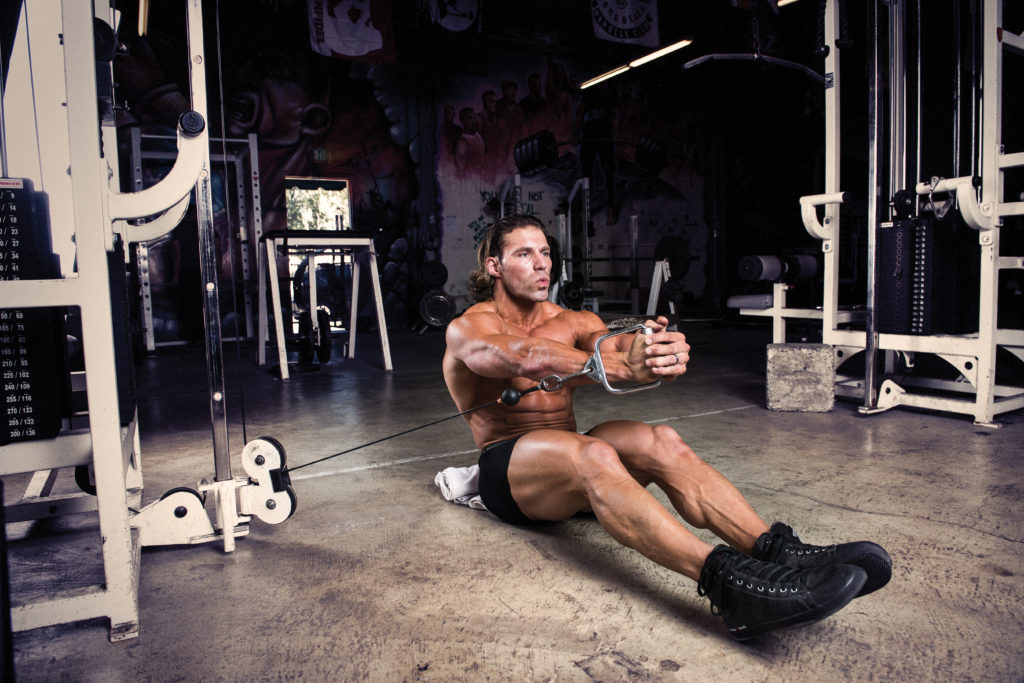
Problem: No Teardrop Muscle
Solution: Incline Backward Treadmill Walking
Top-heavy quads are a common problem with bodybuilders. Normal squatting often doesn’t put enough tension on the vastus medialis (what you might know as the teardrop muscle) down by the knee.
This fixer exercise targets an increase in blood flow and overall workload for the vastus medialis (VM.) The angle of the treadmill shifts the workload to the VM while the high repetition forces massive blood flow to the target muscle. This improves the circulation to the muscle, which helps with supplying nutrients and oxygen for growth.
When performing this technique, practice getting on and off the treadmill while it’s flat, rather than on an incline, to get a feel for how to do it safely. The best way to do this is to support yourself fully on the arms of the treadmill, then set your feet on it and match the speed. Once you have the pace of the belt, take your bodyweight off your arms and begin the exercise.
The speed should be fairly slow the first time you do it, two to three mph at most. Once you get more comfortable with it, start increasing the incline before you boost the speed. The greater the incline, the more effectively this technique will target the VM.
Prescription: This exercise is most useful as a finisher for a leg workout. I recommend a single set of five minutes of straight walking. This will give you a killer quad pump, with a focus on the vastus medialis. You can also perform this technique using intervals (30 seconds on, 30 seconds off), working at a faster pace or higher incline. If you don’t have access to a treadmill, or if you just prefer to train outside, this technique can be used on hill training as well, using the length of the hill as the interval.
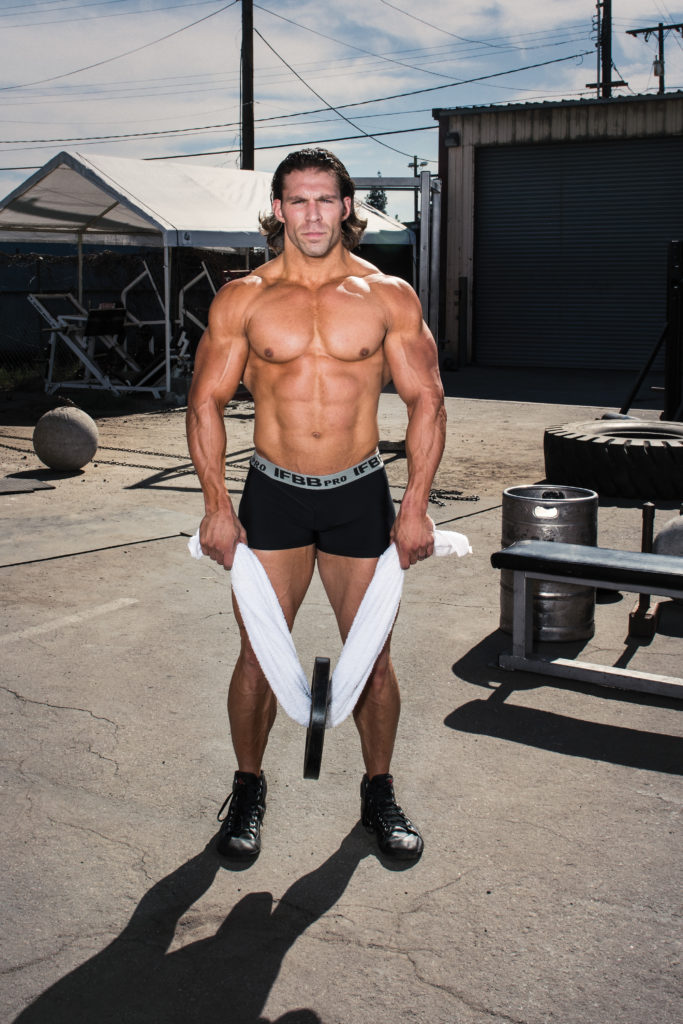
Problem: Narrow Lats
Solution: Corner Rack Pull-Ups
The pull-up is a key exercise for lat development, specifically wide-grip pull-ups for targeting lat width. Nothing conveys power in a physique like a wide, thick back. If you have problem building width in your lats and normal wide-grip pull-ups and pulldowns aren’t getting the job done, you need this exercise. It targets the extreme outer fibers of your lats with incredible stretch and tension.
The corner rack pull-up takes the muscle-building effectiveness of the wide-grip pull-up and adds in a unique application of tension in the form of direction. You’re actually pushing outward at the same time as you’re pulling upward.
This push/pull combination places massive tension on the lats, while the pushing effect minimizes bicep/brachialis involvement in the exercise, putting the majority of the load on the muscles of your back.
This is a humbling exercise. Even if you’re strong on pull-ups, you’ll likely get only a few reps on it the first time you do it. This means you will also need to have a minimum level of strength to be able to perform the exercise properly (eight to 10 reps of a regular pull-up.)
Prescription: Go to the corner of a power rack and set your hands on the two top beams, with your palms forward and using a false grip (wrap your thumbs over the top instead of around the bar). Your hands should be about a foot from the corner.
Once you have your hands set, perform a pull-up from there. As you pull up, push outward and away from you, into the beams of the rack rather than trying to pull yourself up as you would in a normal pull-up. At the bottom of the exercise, let yourself sink down into the stretch (without relaxing the shoulder joint). Pause briefly to let all the elastic tension dissipate from your lats, then start the next rep from a dead hang.
If you’re used to using a lot of rebound in your chins and pull-ups, this will be an eye-opening experience for you and will help tremendously with developing width in your lats. Perform this exercise first in your back workout. It needs to be done when you’re at your freshest and strongest. I recommend three to five sets of four to six reps. IM
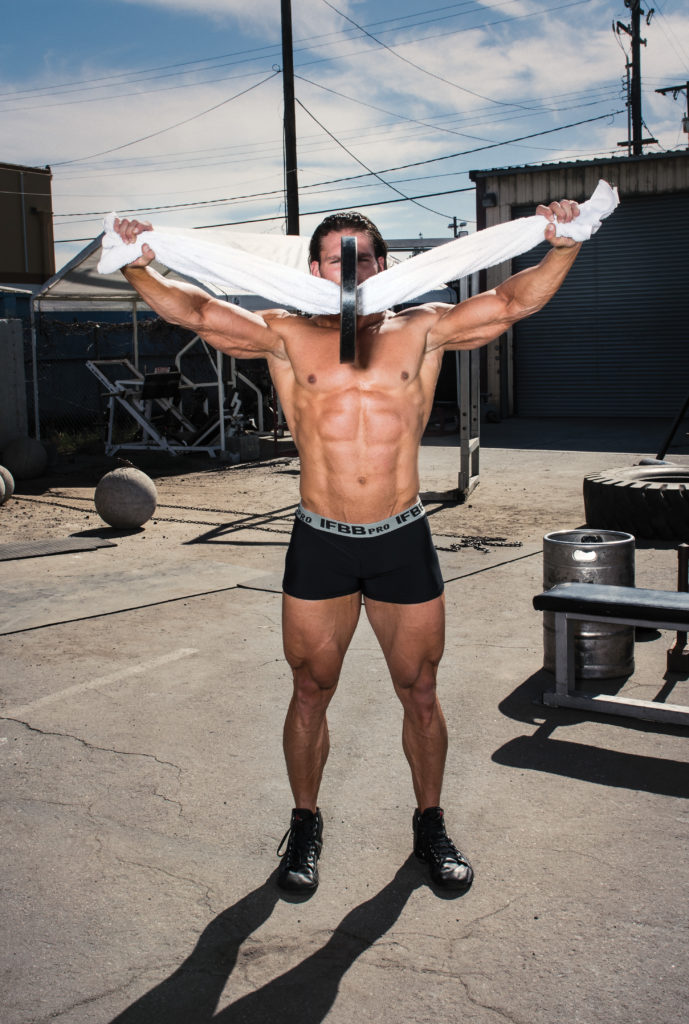






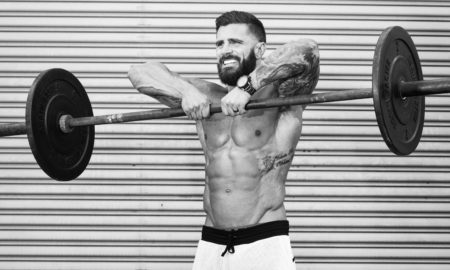
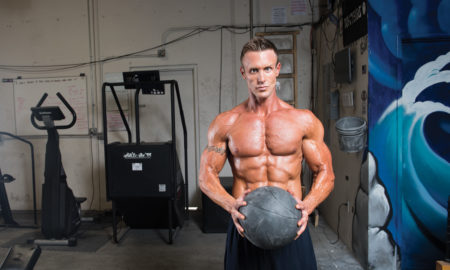














You must be logged in to post a comment Login